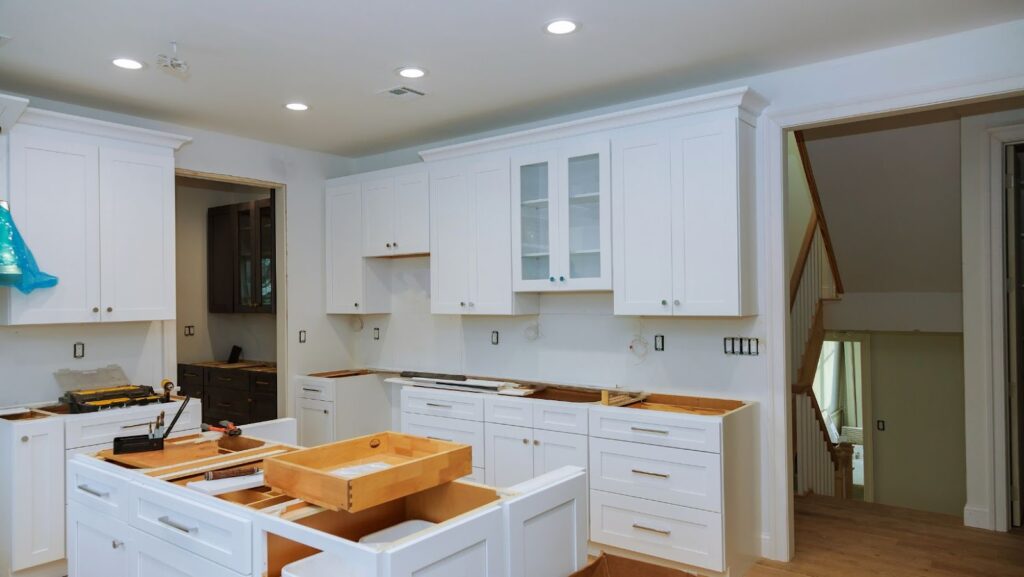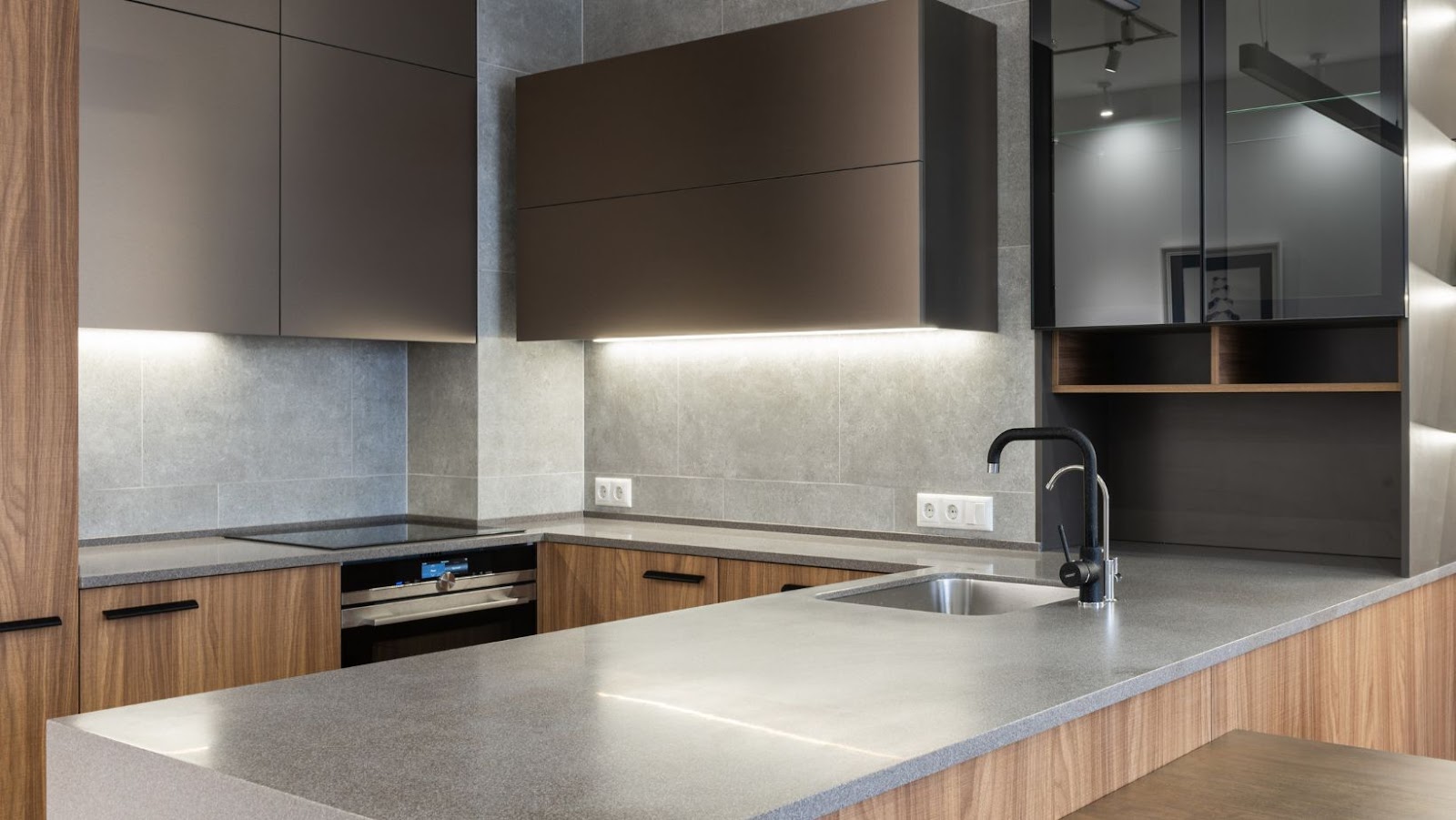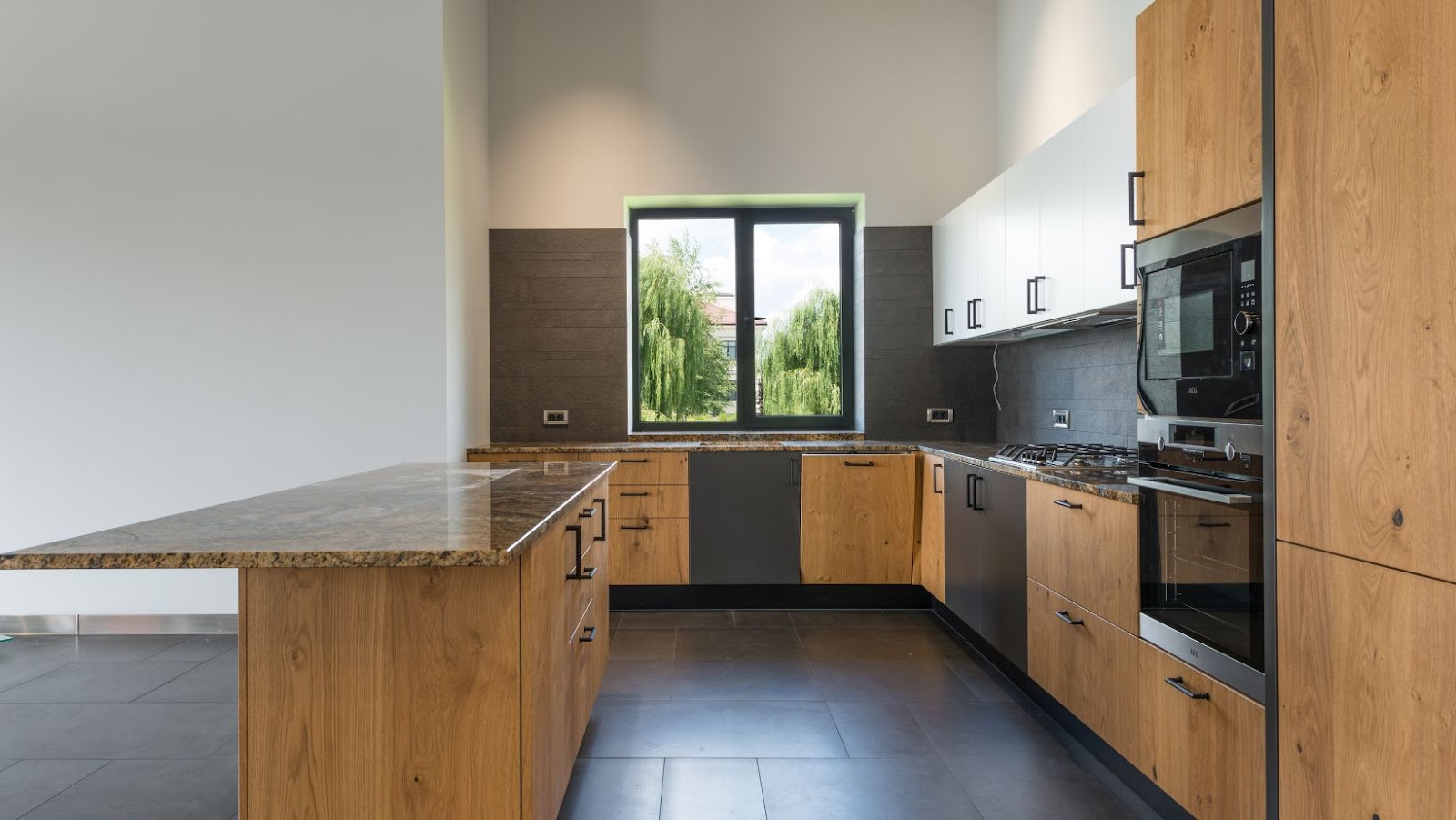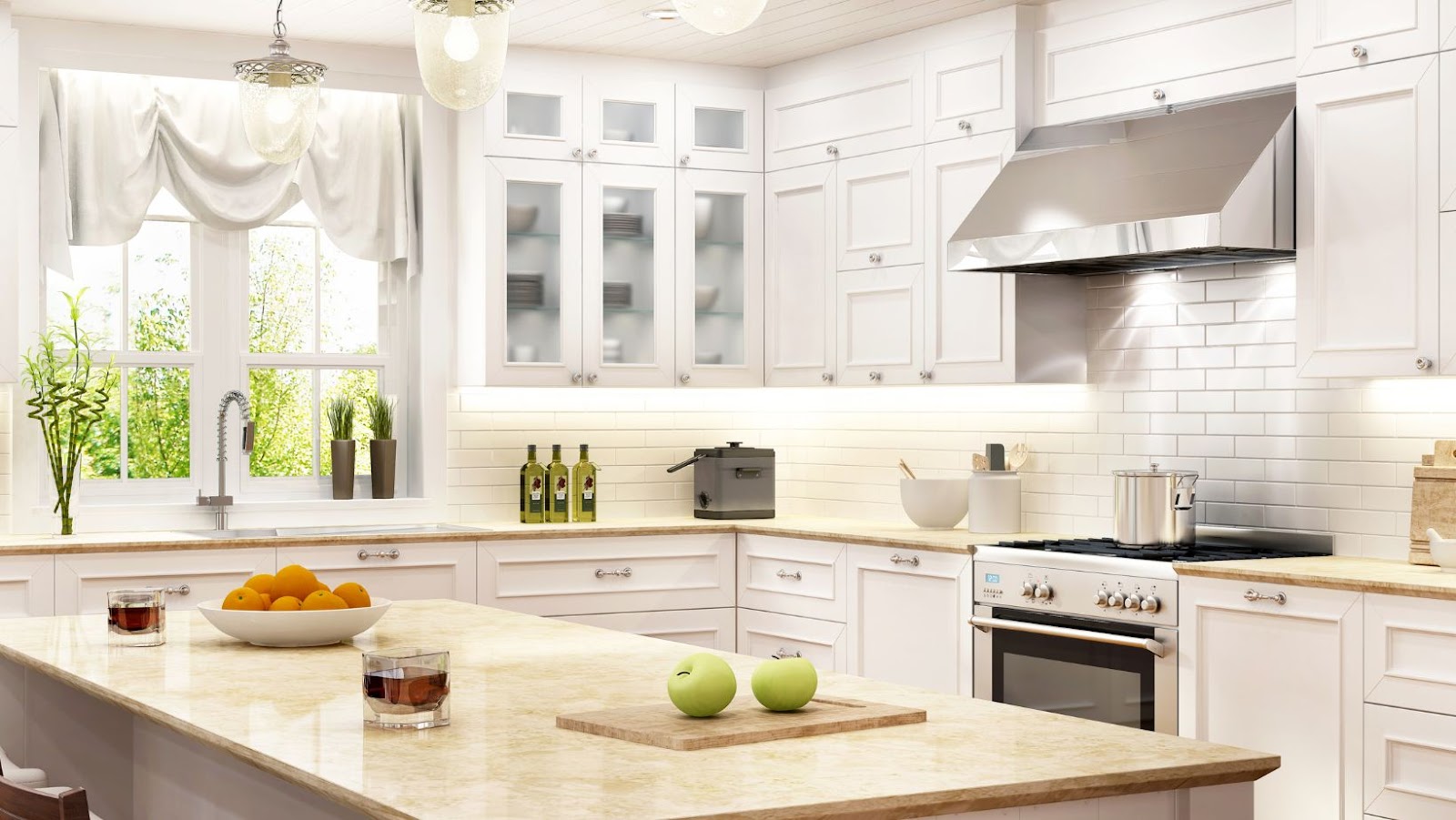Installing the Island Countertop in your Kitchen

Upgrading your kitchen? Installing a kitchen island can make the space feel larger while adding countertop surface and storage. Before installing, assess your space and get a clear idea of how to go about the project.
In this article, we’ll provide a comprehensive guide to installing a kitchen island countertop. Read on to find out more.
How to Install a Kitchen Island
Before installing your kitchen island countertop, it is essential to determine the best location for it.
Here are a few points to consider:
- Space: Make sure to measure your kitchen properly to ensure your island countertop fits comfortably in the space without overcrowding the kitchen.
- Workflow: Consider the workflow of your kitchen while deciding where to place the island countertop. It should not obstruct the flow and movement in the kitchen.
- Purpose: Determine what purpose the countertop is going to serve. It could be for extra storage, seating for meals or a prep station for your meals.
- Lighting: Ensure that there is enough light to cater to the kitchen island countertop area. Islands with overhead lighting or added light fixtures may help any area of the kitchen stay well-lit, making it functional and visually appealing.
Once you have considered all the above points, you can go ahead with the installation process of your kitchen island countertop.
Measure the Kitchen Island Space and Select the Appropriate Countertop Design
Before you install a new kitchen island countertop, it’s essential to measure the space and select the appropriate design to fit your needs and style.
Here are the steps to follow:
- Measure the length and width of your kitchen island space to determine the size of the countertop you need.
- Consider the function of your kitchen island and select a countertop design that fits your needs. For example, granite or quartz countertops offer durability and easy maintenance for cooking and baking, while butcher block countertops are ideal for food prep.
- Choose a colour and finish that complements your kitchen’s colour scheme and style.
- Once you have the necessary measurements and have selected your preferred design, it’s time to install the kitchen island countertop. This typically involves attaching the countertop to the base cabinet with screws or adhesive.
Pro tip: It’s recommended to hire a professional to install your kitchen island countertop to ensure proper and safe installation.
Gather the Necessary Tools and Materials for the Installation Process
Before you begin installing the island countertop in your kitchen, it is crucial to gather all the necessary tools and materials for the installation process. Here are the materials and tools you will need to install the island countertop successfully.
Materials:
- Island countertop
- Screws
- Masking tape
- Contractors glue
- Sandpaper
Tools:
- Tape measure
- Circular saw or jigsaw
- Drill
- Screwdriver
- Clamp
Pro tip: Before purchasing the island countertop, make sure to measure the dimensions of the area where you plan to install it. This will ensure that you pick the right size island countertop and avoid any last-minute complications.
Preparing for Installation
Before beginning your kitchen island installation project, it’s important to make sure you have all the proper supplies and tools needed to complete the job. Set aside enough time and be sure to take safety precautions.

To get started, gather up all the necessary materials. Have a look at the instructions and review any diagrams or drawings that come with them. Make sure you have a good understanding of the steps before you start the project.
Turn off the Electricity and Water Supply to the Area
Before installing an island countertop in your kitchen, it’s important to prepare the area by turning off the electricity and water supply to ensure a safe and efficient installation.
Here’s how you can do it:
1. Turn off the electricity supply to the area where the installation will take place from the main circuit breaker panel.
2. Locate the water supply valve and turn it off to avoid any water damage or leakage during the installation process.
3. Cover the exposed electrical sockets and wiring using electrical tape or plastic wrap to protect them from any dust or debris generated during the installation process.
4. Clear the installation area of any furniture or appliances that may obstruct the installation process or cause damage.
Once the countertop is installed, turn the electricity and water supply back on and enjoy your new kitchen island!
Remove the Old Countertop (if necessary)
Before installing a new kitchen island countertop, it is important to remove the old countertop if necessary. Here are the steps to follow while preparing for the installation process:
Turn off the water supply and disconnect any appliances attached to the countertop.
Use a utility knife to cut through the caulk or adhesive between the old countertop and the base cabinets.
Carefully lift the old countertop off the base cabinets and remove any screws or nails securing it in place.
Check the condition of the base cabinets and repair or replace any damaged areas.
Once the base cabinets are in good condition, clean the area thoroughly and proceed with the installation process for your new island countertop.
Install Necessary Electrical Outlets and Plumbing Fixtures
Before installing a kitchen island countertop, you must install the necessary electrical outlets and plumbing fixtures. Here’s how you can go about it:
Electrical Outlets:
Determine the location of the electrical outlets and draw a layout of the wiring configuration.
Turn off the main electrical supply to avoid electrocution.
Follow the safety guidelines and use proper electrical tools to install outlets, breaker boxes, and wire connections.
Test the electrical supply to check if the connections are working correctly.
Plumbing Fixtures:
Plan the water supply and drainage pipe layout.
Use appropriate tools and equipment to install the drain, pipe, and shut-off valves.
Check the flow of water to detect plumbing faults.
Test the plumbing fixtures to ensure that there are no leaks in the connections before installing the countertop.
It’s crucial to ensure that the electrical outlets and plumbing fixtures are installed correctly before proceeding with the installation of the kitchen island.
Installing the Island Countertop
Installing a kitchen island countertop is a great way to add more storage and workspace to your kitchen. The process is relatively easy, but it can be time consuming.
In this article, we will go over the steps necessary to properly install the island countertop, as well as offer tips on how to ensure the process goes smoothly.
Ensure the Base Cabinets are Level and Secure
Before installing your kitchen island countertop, it’s crucial to ensure that the base cabinets are level and secure.
Here’s what you need to do:
1. Place a level on top of the base cabinets to check if they are level. If not, use shims to adjust the cabinets until they are level.
2. Secure the cabinets to the wall studs using screws and brackets.
3. Check the cabinets for any wobbling or instability. If you notice any, adjust the shims or add more supports as needed.
Following these steps will ensure that your base cabinets are level and secure, providing a sturdy and safe foundation for your new kitchen island countertop.
Place the Countertop onto the Cabinets, Ensuring it is Level
A crucial step while installing a kitchen island countertop is placing it onto the cabinets and ensuring it is level. Here are the steps to follow:
Lift the pre-measured countertop onto the cabinet frame, ensuring it sits snugly in place.
Check that the countertop is level, using a level tool to confirm.
Shim the countertop if necessary to make adjustments.
Once the countertop is level, attach it to the cabinet base using screws from below.
Finally, seal the gap between the countertop and the cabinets to prevent moisture from seeping in.
Pro tip: Enlist the help of another person to lift and position the countertop to make the process smoother and avoid any accidents.
Secure the Countertop to the Cabinets
Securing the countertop to the cabinets is an essential step when installing an island countertop in your kitchen.
To do this, you’ll need: – Screws – Brackets – Drill
Follow these simple steps:
1. Determine where you want to place your island and mark the floor accordingly.
2. Install the cabinets according to the manufacturer’s instructions, making sure they are level and plumb.
3. Once the cabinets are secure, place the countertop on top and position it as desired.
4. Use screws to attach brackets to the underside of the countertop.
5. Attach the brackets to the cabinets using screws and a drill.
6. Check that the countertop is level and secure.
By following these steps, you can ensure that your new island countertop is installed properly and functions as a durable and practical workspace in your kitchen.
Finishing Touches
Installation of a kitchen island countertop can be a great way to bring a modern look to your kitchen while also increasing functionality and storage.
Before you get started on this project, it’s important to understand the basics of kitchen island countertop installation. This section will provide step-by-step instructions on the necessary finishing touches to make sure your installation is done right.
Install any Additional Features
After installing the base of your kitchen island, it’s time to add finishing touches by installing additional features like the countertop. Here are the steps to follow to install an island countertop in your kitchen:
1. Measure the dimensions of your kitchen island and purchase a countertop that fits your needs.
2. Place the countertop over the island base to ensure that it fits correctly.
3. Apply a bead of silicone caulk to the top of the base cabinets.
4. Carefully lift the countertop onto the base cabinets and align it correctly.
5. Apply pressure to the edges of the countertop to secure it to the base cabinets.
6. Use a level to ensure that the countertop is even and adjust it as needed.
7. Drill holes in the countertop for any additional features like faucets or sink basins.
8. Apply a sealer to the countertop to protect it from water damage and stains.
Pro tip: Always wear gloves and eye protection when handling heavy countertops to avoid injury.
Seal and Caulk the Edges of the Countertop
After installing an island countertop in your kitchen, it is important to seal and caulk the edges to prevent moisture and debris from getting trapped underneath.
Here are the steps to follow:
Clean the edges of the countertop and the surrounding area thoroughly with a damp cloth.
Apply a thin layer of silicone caulk along the edges of the countertop, making sure to fill any gaps or spaces.

Smooth out the caulk with your finger, wiping away any excess with a clean towel.
Allow the caulk to dry for at least 24 hours.
Apply a clear sealant to the edges of the countertop and the caulked areas, following the manufacturer’s instructions.
Let the sealant dry completely before using your new kitchen island.
These steps will ensure that your island countertop remains in good condition and protects your kitchen from water damage or mould.
Clean and Polish the Countertop Surface
After installing a kitchen island countertop, it is crucial to clean and polish the surface to enhance its appeal and protect it from wear and tear.
Here’s how to clean and polish your kitchen island countertop:
Start by clearing the surface of any dirt or debris using a soft-bristled broom or vacuum cleaner with a soft brush attachment.
Mix warm water and mild dish soap in a bucket and use a soft sponge or cloth to wipe down the countertop surface, including the sides and edges.
Rinse the countertop thoroughly with a wet cloth and dry it with a clean towel.
Apply a countertop polish using a soft cloth, making sure to cover the whole surface evenly. Allow the polish to dry completely before using the countertop.
Pro Tip: Avoid using harsh chemicals, abrasive sponges or scouring powders, and steel wool when cleaning your kitchen island countertop as they can cause scratches and damage to the surface.
Troubleshooting Tips
Installing a kitchen island countertop is not an activity that should be taken lightly. It requires specific tools, materials, and instructions to ensure that the countertop is installed safely and correctly.
However, every once in a while, you may run into a few issues while you are completing your installation. This section will discuss some of the common issues that you may run into and provide some troubleshooting tips to help you out.
Common Issues to Watch out for During Installation
While installing an island countertop in your kitchen, several issues may arise that can cause delays or even form potentially dangerous situations. Here are some common issues and their troubleshooting tips to ensure a smooth installation process:
Uneven floor: Use shims to level the island countertop and ensure its stability.
Plumbing and electrical issues: Avoid cutting into pipes and electrical lines by mapping out their locations before installation. Hire a professional plumber or electrician to move or install new lines if necessary.
Heavy countertop: Ensure that the island can support the weight of the countertop by installing sturdy brackets or legs.
Measuring errors: Double-check all measurements to ensure that the countertop will fit correctly. Measure multiple times and from different angles to avoid costly mistakes.
Mismatched seams: To ensure that the seams between the countertop’s different pieces of material are barely visible, test-fit and adjust the pieces before applying adhesive.
By keeping these possible issues in mind and following the suggested troubleshooting techniques, you can guarantee a successful kitchen island countertop installation.
Solutions for Common Problems
When installing an island countertop in your kitchen, you may encounter several common problems. Here are some troubleshooting tips to help you overcome these issues:
Uneven cabinets: If your cabinets are uneven, use shims to level them out before installing the countertop. This will prevent the countertop from being uneven and wobbly.
Gaps between the countertop and cabinets: Fill in any gaps with silicone caulking to prevent water from leaking into the cabinets.
Overhanging countertop: If your countertop overhangs, make sure it is securely attached to prevent it from sagging or breaking.
Warped or bowed countertop: Place shims under the countertop to level it out and prevent wobbling.
Pro tip: Always measure carefully and double-check your measurements before making any cuts or adjustments to your island countertop. This will save you time and money in the long run, giving you a functional and beautiful addition to your kitchen.
When to Consider Calling a Professional for Help
Installing an island countertop in your kitchen can be a challenging task, especially if you have limited DIY experience. While there are many resources available on how to install a kitchen island, there may come a point when you need to call in a professional for help.
Here are some signs that it may be time to bring in a pro:
- – You lack the necessary tools and equipment to complete the project.
- – You encounter unexpected problems or complications during the installation process.
- – You don’t have the time or physical ability to tackle such a large project.
- – You’re not confident in your abilities and fear making mistakes that could damage your home or the countertop.
In any of these cases, hiring a professional to install your kitchen island can save you time, money, and hassle in the long run. A skilled contractor can ensure that your countertop is installed safely and correctly, giving you peace of mind and a beautiful finished product.






